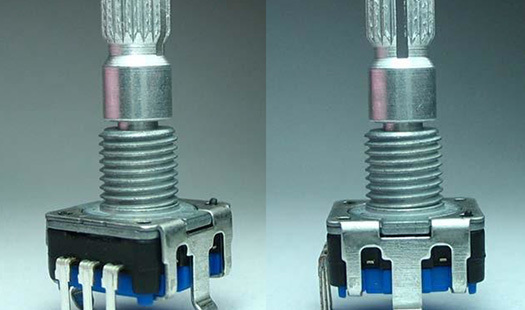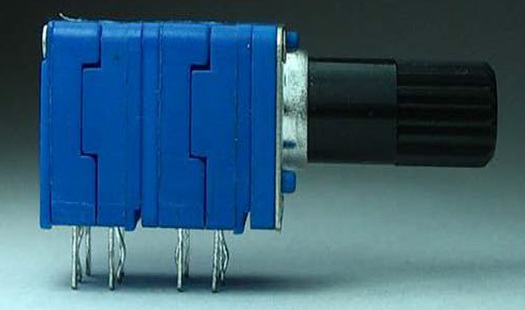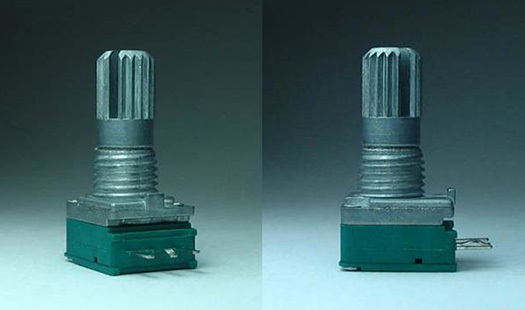Top Applications of 22k Potentiometers in Modern Electronics
Aug 02,2025
Top Applications of 22k Potentiometers in Modern Electronics
Table of Contents
1. Introduction to 22k Potentiometers
2. Understanding Potentiometers and Their Functionality
3. Importance of 22k Potentiometers in Electronic Circuits
4. Key Applications of 22k Potentiometers in Modern Electronics
4.1 Audio Systems
4.2 Sensor Applications
Top Applications of 22k Potentiometers in Modern Electronics
Table of Contents
- 1. Introduction to 22k Potentiometers
- 2. Understanding Potentiometers and Their Functionality
- 3. Importance of 22k Potentiometers in Electronic Circuits
- 4. Key Applications of 22k Potentiometers in Modern Electronics
- 4.1 Audio Systems
- 4.2 Sensor Applications
- 4.3 Lighting Control
- 4.4 Robotics
- 4.5 Consumer Electronics
- 5. Advantages of Using 22k Potentiometers
- 6. Choosing the Right 22k Potentiometer for Your Project
- 7. Installation and Maintenance Tips
- 8. Frequently Asked Questions
- 9. Conclusion
1. Introduction to 22k Potentiometers
In the realm of electronics, **potentiometers** play a crucial role in a myriad of applications. The **22k potentiometer**, in particular, stands out for its specific resistance value that caters to various functional requirements. From **audio equipment** to **lighting systems**, this component is fundamental in achieving dynamic control and precision.
2. Understanding Potentiometers and Their Functionality
A potentiometer is a three-terminal resistor that provides variable resistance. By adjusting the position of the wiper (the movable contact), users can alter the resistance between the wiper and the other two terminals. This adjustability makes potentiometers invaluable for applications requiring fine-tuning, such as in volume controls or adjusting signal levels.
3. Importance of 22k Potentiometers in Electronic Circuits
The **22k potentiometer** is particularly significant due to its balance between sensitivity and stability. This resistance value is optimal for several electronic components, ensuring compatibility with common circuit designs. It allows for effective voltage dividers, enhancing the overall functionality and performance of electronic devices.
4. Key Applications of 22k Potentiometers in Modern Electronics
Understanding where and how 22k potentiometers are applied helps to appreciate their versatility:
4.1 Audio Systems
In audio systems, the 22k potentiometer is primarily used in volume controls and tone adjustments. By integrating this potentiometer, engineers can create a smoother audio experience, enabling users to fine-tune their listening preferences. The linear response of the 22k potentiometer allows for an accurate representation of volume levels, resulting in enhanced sound quality.
4.2 Sensor Applications
22k potentiometers are frequently employed in sensor applications where variable resistance is necessary for signal adjustment. For example, in temperature sensors, they calibrate the sensor readings to reflect accurate temperature levels. This adaptability makes them essential in **thermistors** and other sensor technologies, ensuring precision in data collection.
4.3 Lighting Control
The lighting industry benefits significantly from 22k potentiometers, particularly in **dimmer switches** and **LED lighting** applications. By utilizing these potentiometers, users can adjust brightness levels smoothly, enhancing energy efficiency and user experience. The ability to control light intensity has made 22k potentiometers a staple in both residential and commercial lighting solutions.
4.4 Robotics
In robotics, 22k potentiometers find applications in servos and motor controls. They enable precise position feedback, allowing robotic arms and other actuators to operate accurately. This functionality is crucial for tasks requiring exact positioning and movement, significantly enhancing the performance of robotic systems.
4.5 Consumer Electronics
Consumer electronics, such as televisions, radio devices, and gaming consoles, incorporate 22k potentiometers for various controls. Whether for adjusting contrast, brightness, or volume, these potentiometers provide users with an intuitive way to interact with their devices. Their reliability and ease of integration make them a preferred choice in the design of consumer electronics.
5. Advantages of Using 22k Potentiometers
The advantages of using 22k potentiometers extend beyond simple functionality:
- **Linear and Logarithmic Options**: They come in both linear and logarithmic taper options, providing versatility across applications.
- **Durability**: High-quality 22k potentiometers boast robust construction, ensuring longevity and consistent performance.
- **User-Friendly**: Their design allows for easy adjustments, making them accessible for users of all skill levels.
- **Cost-effective**: Compared to other control mechanisms, 22k potentiometers offer an economical solution for variable resistance needs.
6. Choosing the Right 22k Potentiometer for Your Project
Selecting the right potentiometer involves considering several factors:
- **Type of Taper**: Determine whether a linear or logarithmic taper suits your application.
- **Size and Form Factor**: Ensure the potentiometer fits within the physical constraints of your design.
- **Power Rating**: Verify that the power rating aligns with your application's requirements to prevent overheating.
- **Resistance Tolerance**: Opt for a potentiometer with an appropriate tolerance level to maintain accuracy in your circuit.
By evaluating these aspects, you can choose a 22k potentiometer that meets your project specifications effectively.
7. Installation and Maintenance Tips
Proper installation and maintenance extend the lifespan of 22k potentiometers:
- **Soldering**: Ensure that solder joints are clean and secure to prevent loose connections.
- **Environmental Considerations**: Protect potentiometers from moisture and dust, which can lead to corrosion and malfunction.
- **Periodic Checks**: Regularly inspect potentiometers for wear and performance issues, replacing them as necessary to maintain optimal functionality.
Following these guidelines will help in managing the longevity and effectiveness of 22k potentiometers in your projects.
8. Frequently Asked Questions
What is the function of a potentiometer?
A potentiometer adjusts voltage levels in a circuit by varying resistance, allowing for precise control of electrical signals.
Why choose a 22k potentiometer over other resistance values?
The 22k resistance value offers a balanced sensitivity suitable for various applications, making it a versatile choice for many electronic designs.
Can potentiometers be used in digital circuits?
Yes, potentiometers can be used in digital circuits, especially for analog-to-digital conversion processes and user interfaces.
What is the difference between linear and logarithmic potentiometers?
Linear potentiometers provide a direct relationship between wiper movement and resistance change, while logarithmic potentiometers have a more gradual response, which is better suited for audio applications.
How do I know if my potentiometer is faulty?
Signs of a faulty potentiometer include crackling sounds in audio systems, erratic signal outputs, or physical damage to the component itself.
9. Conclusion
In conclusion, the **22k potentiometer** plays a pivotal role in modern electronics, offering versatility, reliability, and ease of use across various applications. From audio systems to robotics, their ability to finely tune resistance and control electrical signals makes them indispensable in the engineering toolkit. By understanding their applications, advantages, and maintenance, engineers and hobbyists alike can maximize the potential of 22k potentiometers in their projects. Embracing this essential component will undoubtedly enhance the functionality and performance of electronic devices, paving the way for innovations in technology.
PREVIOUS:
More Information
More Information
RECOMMENDED










